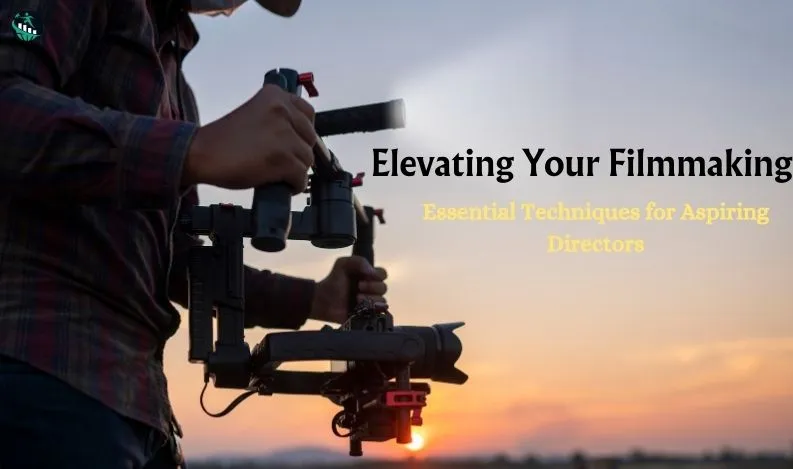
Elevating Your Filmmaking: Essential Techniques for Aspiring Directors
In the world of cinema, the difference between an average film and a masterpiece often lies in the meticulous attention to detail and the mastery of foundational filmmaking techniques. Aspiring filmmakers need to embrace these core principles not only to avoid common pitfalls but to elevate their storytelling to new heights. Here's a deep dive into essential filmmaking techniques that every director should master, offering a comprehensive guide for those looking to make their mark in the industry.
The Power of Visual Storytelling
At its core, filmmaking is visual storytelling. It's about conveying your narrative through the lens, using images, compositions, and visual cues to tell your story. A well-crafted film uses visual elements to enhance the narrative, providing depth and context that dialogue alone cannot achieve. For example, the use of color can convey a character's emotions or foreshadow events, while careful framing can emphasize important details or themes. Mastering visual storytelling means understanding how to use every shot to contribute to the narrative, making each frame count towards the overall story arc.
Assembling the Right Team
Filmmaking is a collaborative art, and the quality of your film hinges on the talent and expertise of your team. When it comes to casting, it's crucial to choose actors who can bring authenticity and depth to their roles, transcending the written script to bring characters to life. Similarly, selecting a crew with the right skill set and vision is paramount. From the director of photography to the sound designer, every crew member plays a vital role in realizing your vision. Building a team that shares your passion and understands your vision is the first step toward creating something truly exceptional.
Immersive Production Design
The world your characters inhabit plays a crucial role in storytelling. Production design, encompassing sets, locations, costumes, and props, must be thoughtfully curated to reflect the film's era, culture, and underlying themes. It's not just about aesthetics; it's about creating an immersive environment that enhances the narrative and gives depth to your characters. For instance, the design of a character's home can reveal much about their personality and background without a single line of dialogue.
Prioritizing Story Over Spectacle
In an era where high-budget blockbusters often prioritize spectacle over substance, it's essential to remember that the heart of filmmaking is storytelling. Technical wizardry and special effects should serve the story, not the other way around. A simple, well-told story can be more impactful than the most visually stunning film with a weak narrative. The key is to use technology and film techniques to enhance and elevate the story, ensuring that every choice, from the camera angle to the editing style, is made with narrative purpose in mind.
Advanced Camera Techniques
The camera is your most powerful tool for storytelling. Beyond basic shot composition, advanced techniques like the dolly zoom or the use of crane shots can add dramatic effect and depth to your narrative. However, these techniques should be used judiciously; the aim is to enhance the storytelling, not distract from it. Understanding when and how to employ these techniques can make the difference between a good film and a great one.
Lighting as a Character
Lighting in film is much more than a technical necessity; it's a storytelling device. The way a scene is lit can dramatically change its tone and mood, influencing the audience's emotional response. For example, the use of shadows can create suspense or fear, while soft, natural light can convey warmth and safety. Mastering lighting means learning to use it as a tool to support the emotional and thematic elements of your story.
The Art of Editing
Editing is where your film truly comes together. It's an art form that requires a deep understanding of pacing, rhythm, and narrative flow. The editor's choices can dramatically alter the structure and impact of the story, making editing one of the most critical stages of the filmmaking process. Understanding the principles of editing, from the use of cutaways to maintain continuity to the pacing of scenes to build tension, is essential for any filmmaker.
Music and Sound Design
Music and sound design are the unsung heroes of filmmaking, capable of transforming a scene from mundane to memorable. The right piece of music can underscore a pivotal moment, amplifying its emotional impact, while sound design can immerse the audience in the film's world. However, restraint is key; music and sound should enhance the narrative, not overwhelm it.
Conclusion:
Filmmaking is an intricate blend of art and craft, requiring a deep understanding of both the technical aspects and the creative process. By mastering these essential techniques, aspiring filmmakers can elevate their work, creating films that not only tell compelling stories but also resonate on a deeper emotional level. Remember, the greatest films are those that seamlessly combine all these elements, crafting a cinematic experience that leaves a lasting impact on the audience.
Also Read:-



Recent Comments: